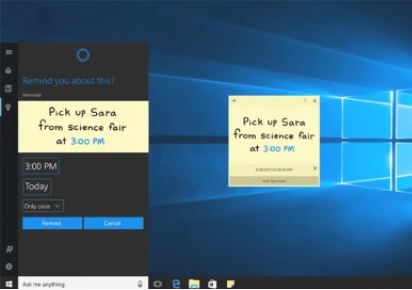Microsoft moves key technologies, including Cortana, from research to product groups

Microsoft is doing a bit of a reorg shuffle, yet again. This time, it's the company's AI + Research Group shedding some of its technologies and teams, which are moving into various product groups at the company.

Cortana is one of the technologies that's moving from AI + Research to the Experiences & Devices team, which is under Executive Vice President Rajesh Jha, a Microsoft spokesperson confirmed. Petri.com reported on October 11 that Cortana had moved from the AI + Research organization to the Office team.
I asked for comment on which other AI + Research technologies are leaving the nest and moving to product groups, but a spokesperson said the company had nothing to share. Officials also declined to say how many individuals or teams are moving to the product groups and/or how many employees will continue to work in the AI + Research organization following these moves. (I'm not hearing about any layoffs associated with these shufflings, for what it's worth.)
Update: I'm hearing Bing for Business (now known as Microsoft Search in Bing) also moved to Experiences & Devices. And Microsoft News may actually have moved into Shum's organization as part of the reorg.
I hear Corporate Vice President Javier Soltero is still in charge of the Cortana team in its new home. In an interview I had earlier this year with him, Soltero explained how Microsoft is repositioning Cortana from a standalone digital assistant to more of an assistance aide. Given the strong focus on home and work productivity by the Microsoft 365 and Office teams, it makes sense for Cortana to be situated in that group.
Jamil Valliani, a Microsoft Partner Group Program Manager and former head of product for Bing's Image & Video Search -- with whom I spoke at Ignite last month -- emphasized the increased productivity focus for Cortana.
"The idea is bringing Cortana to you at home, at work and on the go. How can we help users be more productive, complete tasks that are more painful and difficult?"Vallini said
Microsoft wants to employ Cortana for more intelligent, complex searches, rather than simple utilitarian ones. Instead of simply using Cortana to "call Joe" in a user's contact list, Microsoft wants Cortana to play a role in processing and understanding chained queries, such as "call my manager," he explained.
In 2016, Microsoft created its combined AI + Research Group, combining Cortana, Bing, Ambient Computing and Robotics engineering into a single unit with more than 5,000 people. AI + Research is headed by Executive Vice President Harry Shum, and has been charged with handling AI product engineering, basic and applied research, Shum continues to lead the AI + Research Group.